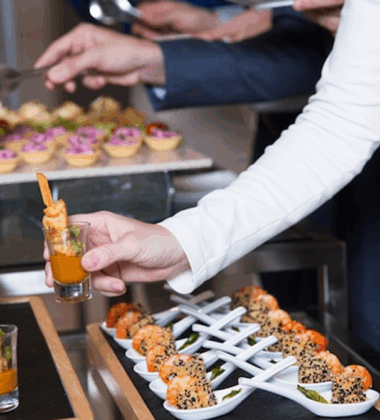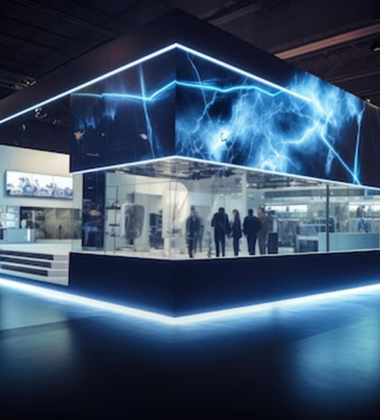In today’s saturated food and beverage landscape, product quality alone no longer guarantees attention, let alone loyalty. Brands competing at major trade shows like the Global Products Expo USA have discovered a more powerful tool for memory, connection, and impact: anchor marketing.
Rooted in behavioral science, anchor marketing uses emotionally charged moments—especially those tied to sensory experiences—to lodge a brand into the minds (and hearts) of consumers. When used effectively, this strategy transforms fleeting samples into lasting impressions, and simple food tastings into brand-defining stories.
What Is Anchor Marketing?
Anchor marketing is the intentional creation of emotionally resonant moments that “anchor” a brand to a consumer’s memory. In the context of food, this often happens through immersive, sensory-rich experiences that connect taste with story, identity, and feeling.
Imagine sipping a citrusy herbal drink in a booth that smells like a Mediterranean garden. A warm voice shares how the recipe has been passed through generations. You’re holding a glass etched with your name, and in the background plays the sound of ocean waves. That moment—how you feel, what you taste, what you hear—is now inseparably tied to the brand.
That’s the power of anchor marketing: it doesn’t just inform—it imprints.
Why Anchor Moments Matter in Food Marketing
The human brain is wired to remember through association. According to cognitive neuroscience, memories are more likely to stick when they are:
- Tied to strong emotion
- Associated with multiple senses
- Connected to personal relevance or narrative
Food offers all three.
A well-crafted tasting experience can become a “memory anchor”—a psychological hook that helps someone recall not only the flavor but the brand, the story, and the feeling associated with it. For food marketers and brand architects, these anchors are golden. They shorten the path from awareness to affinity and from affinity to advocacy.
What Makes an Edible Moment Unforgettable?
At expos, product samples abound. But only a few brands are remembered weeks later. Why?
Unforgettable moments are anchored in three strategic elements:
1. Contextual Storytelling
The story behind the food—its origin, purpose, or transformation—creates emotional stakes. It gives the taste meaning.
Example: A brand showcasing saffron-infused snacks doesn’t just talk about health benefits. They walk attendees through a virtual spice trail, letting them touch dried petals, hear from real farmers on-screen, and take home a hand-labeled satchel of origin-certified saffron. This isn’t just sampling; it’s storytelling as memory architecture.
2. Multisensory Engagement
Anchor moments are multisensory by nature. Sound, touch, smell, and even temperature help fix an experience in the brain. Taste is just the entry point.
At the Global Products Expo USA, one vegan chocolate brand dimmed their booth lights and handed out noise-canceling headphones so guests could fully immerse in flavor while listening to the story of the cacao’s origin. Post-event surveys showed that their brand recall was 2.4x higher than nearby booths offering standard samples.
3. Personal Relevance
The strongest anchors are personal. When people feel seen or involved in the experience, the moment becomes theirs.
Brands that allow customization, personal storytelling, or self-expression in their tastings dramatically increase emotional impact. Think: build-your-own flavor blend bars, edible poetry pairings, or taste quizzes that lead to personalized product suggestions.
Expo-Worthy Examples of Anchor Marketing in Action
The Botanical Memory Wall
One beverage startup invited visitors to taste herbal tonics and then write down the memory the flavor evoked. Each note was pinned to a living wall of plants. By the end of the show, their booth was not just a place to sample—it became a tapestry of shared stories. This public co-creation gave attendees a sense of ownership and made the brand unforgettable.
The Scented Timeline
A spice company created a chronological experience where guests walked through eras of spice trade history—each marked by different aroma diffusers and sample pairings. The journey ended with a bite of a contemporary dish using all the showcased spices. Visitors spent more time here than at any other booth in their row, and the brand was trending on social within hours.
The Takeaway Anchor
An oat milk brand gave visitors small journals embossed with their flavor story and space for personal reflections. The gesture was simple, but for many, the journal became a desk item that reminded them daily of the product. According to the brand, 60% of follow-up online orders came from those who received the journal.
Why This Works: The Science Behind Anchor Marketing
According to a 2023 white paper from the Food & Brand Memory Institute:
- Experiences paired with storytelling have a 58% higher recall rate than product demos alone.
- Multisensory sampling booths are 3.7x more likely to be shared on social media.
- Emotionally resonant activations generate 42% more on-site conversions.
These aren’t just soft metrics. They reflect tangible ROI that makes the case for investing in creative anchor strategies at high-traffic events.
How to Build an Anchor Marketing Plan for Your Next Expo
If you’re planning to exhibit at the Global Products Expo USA or a similar international trade show, here’s how to turn your product sampling into anchored experiences:
Step 1: Identify Your Core Emotional Message
Ask: What do we want visitors to feel, believe, and remember? Anchor marketing works best when there’s a single clear message (e.g., “our food heals,” “we’re rooted in tradition,” or “we make wellness joyful”).
Step 2: Craft a Sensory Narrative
Build your booth around a narrative arc—beginning, tension, transformation—that engages the senses in deliberate ways. Use props, textures, lighting, soundscapes, and movement to make the moment tactile and immersive.
Step 3: Make It Personal
Give attendees a way to express themselves within the experience. It could be as simple as writing their name on a flavor blend, choosing a path through the booth, or sharing a memory tied to a taste.
Step 4: Design for After-Effect
Anchor marketing doesn’t stop when the booth visit ends. Include a takeaway—digital or physical—that reactivates the memory later. Think personalized emails referencing their choices, packaging inspired by the booth, or thank-you videos that replay the booth moment.
Who Should Use Anchor Marketing?
- Culinary creatives who want their artistry remembered, not just tasted.
- Product developers introducing novel or unfamiliar flavors that need emotional context.
- Chefs who wish to extend their storytelling beyond the plate.
- Food startups competing against legacy brands with bigger ad budgets.
- Experience designers crafting thematic or brand-aligned expo booths.
In short, anyone who wants to turn attention into connection.
What’s Next for Anchor Marketing?
As AI-driven personalization and wearable tech evolve, anchor marketing will become even more precise. Imagine flavor journeys synced to biometric responses, or post-show messaging tailored to emotional responses captured at the booth.
What won’t change? The fundamental need for meaningful moments—those rare intersections of taste, story, and soul that make a brand unforgettable.
Final Bite
In a world where products are easy to forget, moments are not. Anchor marketing allows you to craft those moments with intention, science, and heart. The brands that will stand out in 2025 and beyond are those that understand this: the future of food marketing isn’t just about what you serve—it’s about what they remember.
At your next trade show, ask not just how your food tastes, but how it feels, sounds, and lives on in your audience’s memory. That’s the true flavor of brand loyalty.





